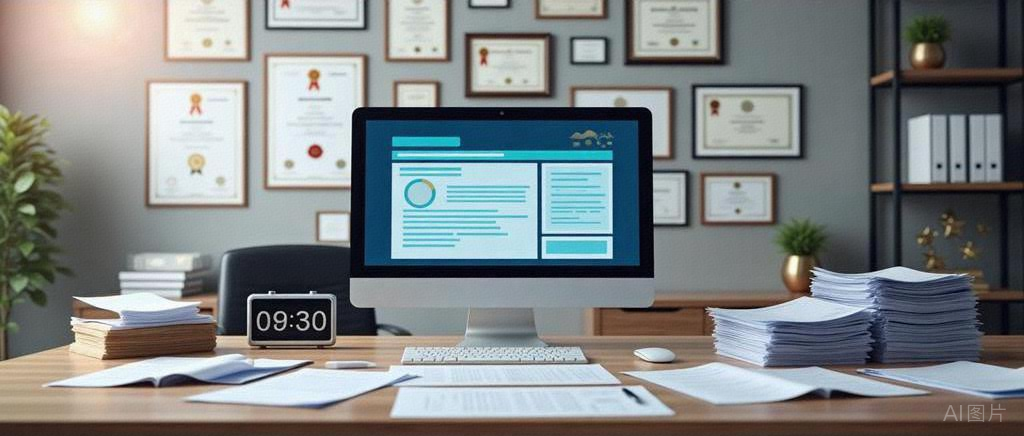Enterprises maintain the effectiveness of quality certification
Release time:
2025-08-02
To maintain the validity of quality certifications, enterprises must make comprehensive efforts across multiple dimensions—including management systems, personnel capabilities, product quality, and continuous improvement—to ensure ongoing compliance with certification standards. Specific measures are as follows:

To maintain the validity of quality certifications, enterprises must make comprehensive efforts across multiple dimensions—including management systems, personnel capabilities, product quality, and continuous improvement—to ensure ongoing compliance with certification standards. Specific measures are as follows:
1. Strictly Adhere to Certification Standards in Maintaining the Management System
- Sustain Compliance with Standards: Gain an in-depth understanding of the standards and specifications on which the quality certification is based, and strictly follow them in daily operations and management. Conduct regular internal audits to comprehensively examine whether all corporate activities and processes align with the standards, promptly identifying and correcting any non-conformities.
- Improve Management System Documentation: As the enterprise evolves and the external environment changes, timely update and refine management system documents to ensure they remain effective and appropriate. These documents should clearly outline the company’s quality policies, objectives, processes, and responsibilities, providing clear guidance for operations.
2. Enhance Overall Quality Awareness and Professional Competence
- Conduct Quality Training and Education: Regularly organize quality training sessions for employees to raise awareness of the importance of quality certification and help them understand their critical role in ensuring product quality. Training content should not only cover quality standards and operational procedures but also include the application of quality management tools and methods.
- Encourage Continuous Learning: Support employees in participating in industry seminars, professional skills training, and other activities to continuously update their knowledge and skills in response to evolving quality requirements. Provide advanced learning opportunities for technical and quality management personnel, enabling them to stay abreast of the latest industry trends and technological advancements, thereby strengthening the company’s quality management capabilities.
3. Strengthen Product Quality Control and Supervision
- Control Raw Material Quality: Establish a rigorous mechanism for evaluating and selecting raw material suppliers to ensure purchased materials meet quality standards. Enhance inspection and acceptance procedures for raw materials to prevent substandard inputs from entering the production process. For example, feed manufacturers should conduct strict quality tests on purchased grains, soybean meal, and other raw materials, including nutritional content analysis and harmful substance detection.
- Monitor Production Processes Closely: Set key quality control points during production and utilize advanced testing equipment and technologies to monitor product quality in real time. Strengthen the maintenance and upkeep of production equipment to ensure normal operation and consistent product quality. For instance, in feed production, real-time monitoring of key indicators such as mixing uniformity and pellet forming rate should be conducted, with production parameters adjusted as needed.
- Enhance Finished Product Testing: Develop a comprehensive finished product inspection system to rigorously test each batch of products according to standards, ensuring compliance with certification requirements. Establish a sample retention system to facilitate traceability and retesting in case of issues.
4. Proactively Adapt to Internal and External Changes to Achieve Continuous Improvement
- Monitor Regulatory and Policy Changes: Assign dedicated personnel to track updates in national and local regulations and policies, promptly adjusting business operations to ensure ongoing compliance with the latest requirements. For example, when environmental or quality standards in the feed industry change, the enterprise should respond swiftly by implementing corresponding improvements to align products and processes with new standards.
- Gather Customer Feedback: Establish effective channels for customer feedback to timely collect opinions and suggestions. Conduct in-depth analysis of quality-related issues raised by customers and implement targeted improvement measures to continuously enhance product quality and service levels.
- Drive Continuous Improvement: Regularly review and evaluate the implementation of quality certification, analyze existing problems and shortcomings, and develop practical improvement plans. Encourage employees to propose suggestions for improvement, fostering a corporate culture where everyone actively participates in the pursuit of continuous enhancement.
Tag:
Recommended
Share


